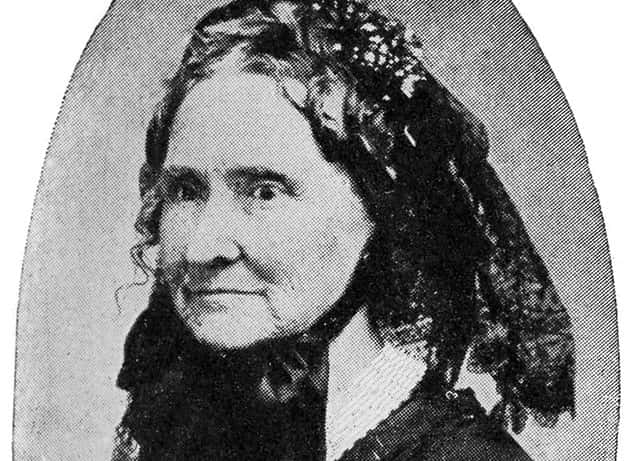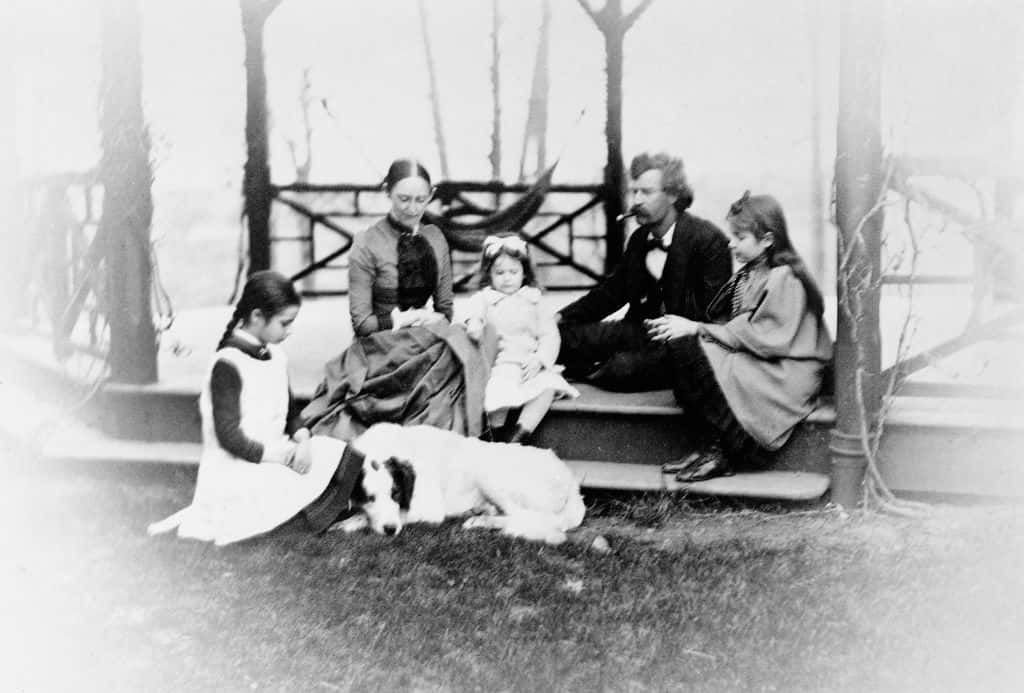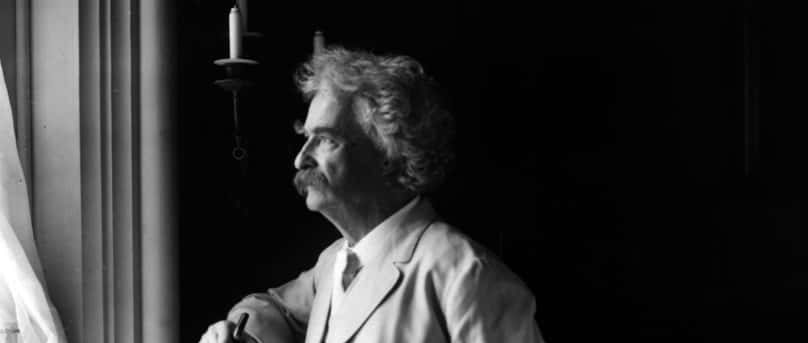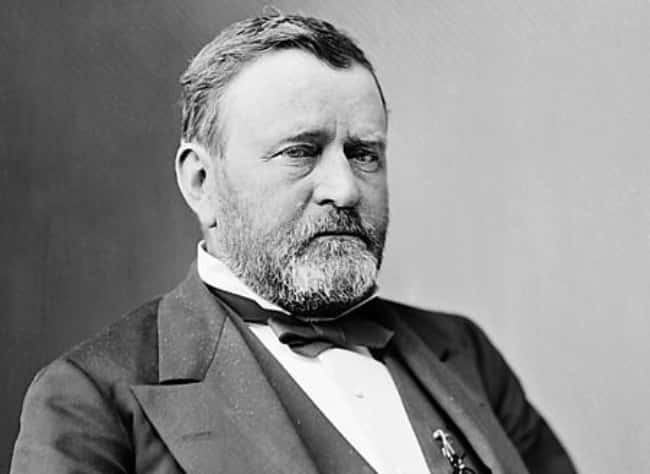"Never put off till tomorrow what you can do the day after tomorrow". —Mark Twain
Considered by William Faulkner to be the "father of American literature," Mark Twain was a looming iconoclast whose words have stood the test of time, as they proved both biting and prophetic, while his wisdom is timeless. Twain was a man who didn’t mince words and who worked to expose hypocrisy in the world, as well as some of its injustices. Here are some of the most interesting facts about the legendary writer.

1. Helping Himself
The most successful book of Mark Twain’s life was his first novel entitled The Innocents Abroad. Part of the reason for this was that a review was published by an anonymous critic who raved wildly about the work. That anonymous critic, however, was none other than Twain himself. Clever boy.

2. White Clothes, Don’t Care
Mark Twain is known for his trademark white suit, which he wore as a way to depict his attitude towards life. Thus, he called this suit his "dontcareadam" suit.
 Wikipedia
Wikipedia
3. Ginger Twain
Twain’s hair is known for being a rather shocking white, but before it turned this color it was actually red.
4. Motherly Love
It took some time for Mark Twain to reach his fame, and even his mother at first didn’t see much in him. Born prematurely, Twain was a fragile baby who almost didn’t survive and grew up sickly. This led to harsh words from his own mother, who said, "When I first saw him, I could see no promise in him".
5. Sam, I Am
You may know this one, but in case you didn’t, Mark Twain wasn’t his real name. Instead, he was born Samuel Langhorne Clemens in the town of Florida, Missouri.
6. Trial and Pen Name Error
A young Samuel Clemens had a series of failed pen names before he finally settled on Mark Twain in 1863. Among these were W. Epaminondas Adrastus Blab and Thomas Jefferson Snodgrass.
7. Survival Story
Samuel Clemens wasn’t the only child in his family to grow up with ill health, as he lost half of his siblings to an early grave, and when he was 11, his father perished from pneumonia.
8. Education Matters
Clemens wasn’t formally educated, but he still took his education very seriously, making sure to study at public libraries while he was growing up. He found that this enabled him access to a greater breadth of information to consume and learn from, and subsequently molded his way of thought in a way that allowed for him to see things from different perspectives.
9. Printers Trade
After his father died, Clemens decided to enter the workforce as an apprentice printer, and when he turned 18, he felt it was time to travel the country. He went to the big cities of New York, Philadelphia, and St. Louis as a member of the printers trade union.
10. Pilot Dream
Though Clemens was working as a printer, it was not a part of his aspirations. Instead, his dream was to be a steamboatman. It took him two years of training, as he had to learn the nuances of over 1,200 miles of the Mississippi River riverbed, but he eventually received his pilot’s license.
11. New Name
Clemens got his pen name from these years training to be a steamboat pilot, as "mark twain" was the cry a leadsman would give whenever they came across a geological sound that was two fathoms deep and safe to travel in, so they could mark the "twain," which meant two.
12. Duel Escape
Twain left Nevada after challenging another newspaperman to a duel. After ejecting himself from the escalating situation before anything could go down, he found himself in San Francisco.
13. Lucky Break
The first big literary hit of Twain’s career was "The Celebrated Jumping Frog of Calaveras County". This story was written after Twain heard of a frog jumping competition while he was traveling. The tale was originally meant to be published in the book of a friend, but Twain didn’t finish the story in time. Instead, his friend sent the story over to the editor at The New York Saturday Press, where it found a home and widely acclaimed success.
14. Ghost Dreams
Due to his premonition, Twain began a lifelong interest in parapsychology, and when the Society for Psychical Research was formed, he was one of their first members. The society is still active today, continuing its research into paranormal activity that goes beyond the scope of contemporary science.
15. Childhood Friends
The inspiration for the character of Huckleberry Finn came from real life, as Twain knew a kid by the name of Tom Blankenship growing up, and tried to portray him, faults and all, exactly as he remembered.
16. No One Left
There are no more living relatives of Mark Twain.
17. Cat Lover
Mark Twain loved cats, and he lived with as many as 19 at one point.
18. Only Known Footage
Though he only lived up 1910, there is one piece of live footage of Mark Twain, dating back to 1909, when Thomas Edison paid the writer a visit and filmed him. This footage was later put into Edison's short film The Prince and the Pauper.
19. Twain and Tesla
Mark Twain kept many famous friends, but really he was interested in other interesting humans. One of his closet relationships was with the enigmatic Nikola Tesla. Twain loved visiting the innovator in his laboratory and hanging out with him while he worked.
20. Fighting for the South
Not long after the Civil War began, Twain joined a Confederate militia, which was fighting on the side of the south. This was due to his southern roots rather than for ideological reasons. He spent only two weeks with the militia, who disbanded after hearing that Ulysses S. Grant was making his way in their direction.
 Wikipedia
Wikipedia
21. Silver Miner Fail
Twain’s older brother Orion was doing well for himself, and during the Civil War he was named the territorial secretary in Nevada. Twain saw this as an opportunity and traveled out West to be around his brother. There he decided to try and make it big and spent time working as a silver miner. That didn’t work out, so instead he took a reporting job with a newspaper in Virginia City, Nevada.
22. President’s Memoir
Even though he once almost came across Ulysses Grant on the battlefield, years later Twain would have the privilege of publishing the President’s memoir. And a good thing too: This memoir would save both of their butts financially.
23. Telephone Turn Down
It’s rare to get the opportunity to invest in a promising new technology nowadays, so you can imagine how rare it was in the 19th century. Twain was a skeptical soul, however, and when a guy by the name of Alexander Graham Bell approached him to ask for an investment in his newest technology, Twain was said to have declined the offer. The technology was, of course, the telephone.
24. Investments of His Own
Just because he couldn’t foresee the success of the telephone doesn’t mean that Twain wasn’t interested in investments. Actually, he had many investments himself, which included a garment strap, a historical trivia game, a Paige Typesetting Machine (which proved to be his biggest failure), and a self-pasting scrapbook (which would prove to be one of his most successful). What are the odds that none of those would become as big as the telephone?
25. Obsolete Machine
Sadly, the Paige Typesetting Machine was no ordinary investment for Twain, as he poured most of his life earnings into it, amounting to $300,000. Adjusted for inflation, this amount is equal to roughly $8 million. The saddest part of the invention was that before it could even be finished, the Linotype was invented and made his machine obsolete.
26. Tragic Recruitment
Clemens was excited about his steamboatman training and used his enthusiasm to convince his younger brother Henry to come join him. Not long after arriving, Henry would die in a tragic steamboat explosion at the age of only 19.
27. Great Grief
The loss of Henry left Twain stricken with severe guilt and grief, as he blamed himself for the demise of his brother for the rest of his life. Twain claimed that one month before the explosion occurred, he had a dream in which he had a premonition about his brother's passing.



































